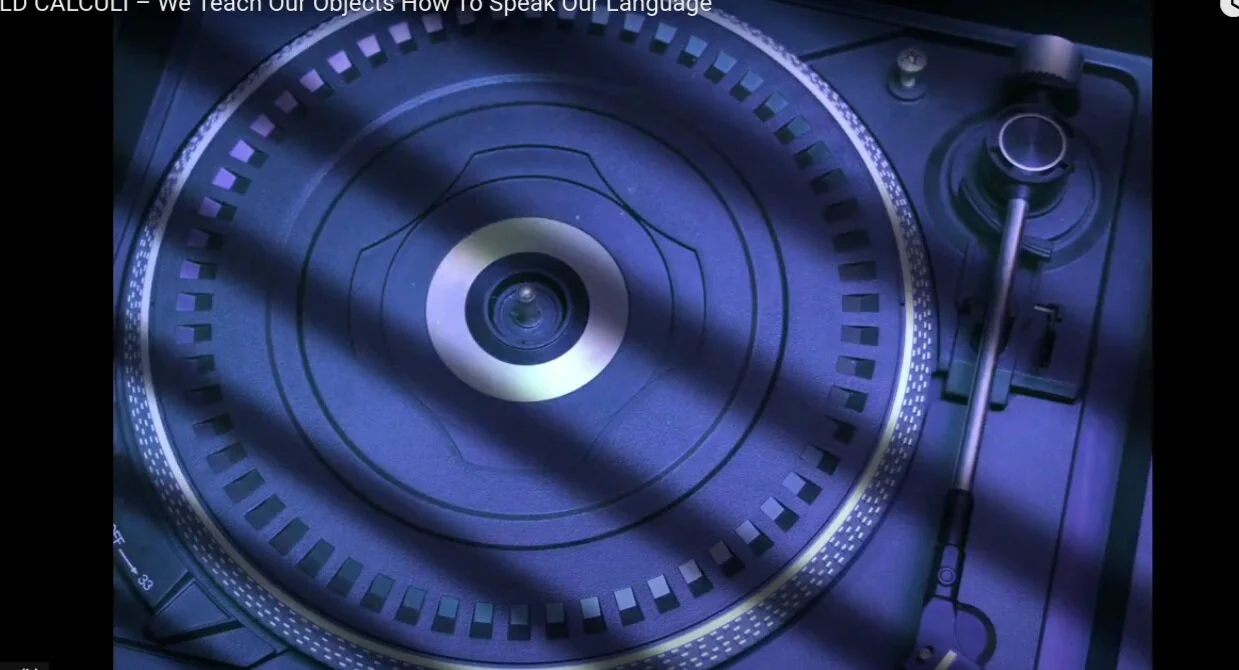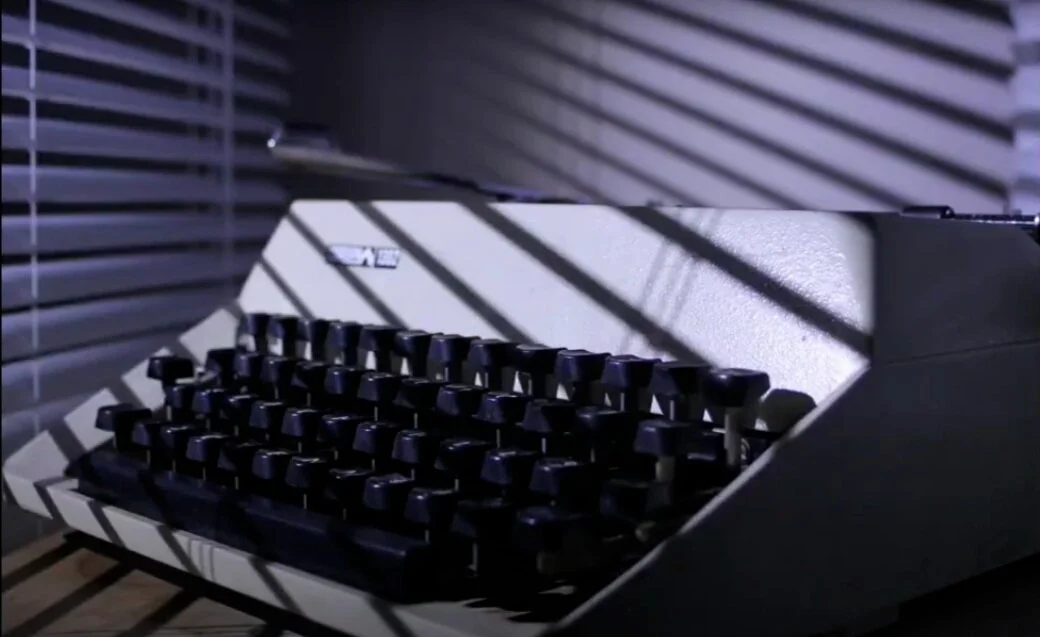Stir Q&A: Behind the surreal stop-motion music-theatre video "We Teach Our Objects How to Speak Our Language"
In the Theatre Conspiracy and Rumble Theatre coproduction, animators Margaret Krawecka and Ulla Laidlaw bring Tim Carlson and Cold Calculi’s song to life
Some of the old-school “objects” in stills from “We Teach Our Objects How to Speak Our Language”.
OLD-SCHOOL turntables, typewriters, telephones, and barware dance in the shadows of rollup blinds in “We Teach Our Objects How to Speak Our Language”—a new stop-motion video that brings together theatre and music.
Coproduced by Vancouver’s Rumble Theatre and Theatre Conspiracy and animated by Toronto’s Margaret Krawecka and Ulla Laidlaw, the cross-country hybrid project debuts today; you can watch it here. And don’t be surprised if the hallucinatory imagery of isolation—and the ideas about the way the things that surround us can carry memories and a life all their own—speak directly to what you’re going through during pandemic social isolation.
The song goes inside the mind of a character in the upcoming play-turned-audio series Isolation Suite by Theatre Conspiracy’s Tim Carlson. It centres on UnDone, a rock musician whose mental health is eroding and whose world is becoming surreal. (Isolation Suite was slated for a spring 2021 stage premiere but, due to the pandemic, the live version has been postponed to next season, and instead an audio series, supported by music videos and a multimedia website, will be launched in April 2021.)
Carlson wrote the lyrics for the trippy new “We Teach Our Objects How to Speak Our Language” (drawing lines from a real poetry review), and the driving, postpunk-tinged music comes courtesy of his band Cold Calculi.
Stir asked animator Krawecka, who’s also an architect, interior designer, and installation artist, about the project and its “mind space”.
You and Ulla were supposed to travel here to workshop this as a play. How and why did the project morph into a music video after COVID hit?
“Music and songs were always a big component of the production—Ulla had already worked on a music video for another one of the songs. So when COVID hit, we applied for a Canada Council and CBC/Radio-Canada Digital Original grant with the idea of making an object animation video for "We Teach Our Objects How To Speak Our Language", as a way to keep the creative momentum going despite not being able to collaborate together in Vancouver. We were lucky to get selected for the grant and that's how this video creation process started.”
How long, and how much patience, does it take to create a stop-motion piece like this and time it to the rhythms of music--and what do you enjoy about that process?
“The process involved the planning phase, which included shopping and sourcing objects, then two weeks of shooting full-time, followed by another week or two of editing. It's definitely way more work than might first seem! To make this kind of stop-motion animation, it definitely takes great, and at times obsessive, attention to detail. If one element that is not being animated accidentally moves part way through the shooting sequence, you have to start all over again—which can definitely be a test of one's patience! Animating the sequences in time to the music in post-production was a very enjoyable and freeform part of the process—sort of the reward at the end of the more arduous and physically labour-intensive shoot.”
Blinds are a strong motif in the video. What's the significance or metaphor there?
“Since the beginning, the blinds were the driving idea behind the set design for the show. Their initial intention was to act as permeable separators between the audience and performers, and also between the audience members themselves, creating the feeling of loneliness and isolation that is sometimes, ironically, the side effect of our hyperconnected world. In the video, we took this idea further, the blinds representing the boundary between the inner self and the outer world, and how that boundary can open and close, putting us in and out of isolation. And how sometimes we project our dreams and desires onto it, instead of actually seeing reality as is—playing on the idea of ‘blindness’. One interesting question that emerged was ‘Who is operating the blinds?’”
How did you go about choosing some of the other objects--the vintage telephone, the crystal drink glasses, or the ashtray?
“We wanted the objects to belong to a certain time period, specifically the late ’70s, early ’80s. Things you might imagine finding inside a guy's apartment. We wanted to create a sense of nostalgia, a sort of time capsule—the space, literally and metaphorically, of somebody who is stuck in their head, in another time, finding comfort in memories of a past life and the pre-digital world in general—with its records, cassettes, typewriters and other analogue machines.”
You've talked about creating the character's "mind space”—what does that mean?
“It's the idea of representing a state of mind through a physical space—so, being stuck in this world of the ’70s and ’80s, and being surrounded by its objects come back to life, but at the same time always enclosed by the blinds. (Every scene has the presence of the blinds in it, whether they be in the background or as shadows, et cetera.) The blinds box acts as a container for this make-believe world of animated objects, but it is also the container of a psyche.”
Do we attach too much meaning and memory to the objects around us?
“I think it's natural to attach meaning and memory to objects. In cognitive science, there is something called the ‘extended mind thesis’, where the objects we rely on literally become an extension of us. We talked about the idea of ‘prosthetics’, and how our environment and the objects around us fuse with our body and whole being, even defining who we are.
“So with the idea of outdated technologies of the past that this protagonist clings to, there's the image of the hand strumming the guitar, and when the guitar disappears the hand is still repeating the strumming motion because it's what it's used to and can't stop. Well maybe guitars aren't exactly obsolete—yet?—but the example of the fingers typing on an invisible typewriter is another one. And that's also where the senses come in: first isolated in their bubbles and cut off from sensation, just like us during COVID, in a way, then coming out and trying to remember what it was like to once smell, touch, hear, and interact with those objects of the past.”
How do you feel this video speaks directly to our time--and were you acutely aware of that as you worked on creating it during pandemic isolation?
"Creating the video within the context of the pandemic definitely influenced its outcome, or at least that's how it felt while we were making it! For logistical reasons, we made the choice to shoot the whole thing inside my apartment, which meant that my already small living space was converted into a film studio for two weeks, complete with changeable mini sets, theatre lights and stands, cables, clay body parts, and objects in every free corner. Because of the tightness of the work space, we had to manoeuvre our bodies very carefully around the set ups, not to knock anything over, in a sort of choreography of twisting and bending--which sometimes resulted in some truly comical situations! And to add to the strangeness of it all, we were masked at the same time. So I'm sure the process itself had an impact on the ethos of the video, but I think in general the theme of isolation, which we were already exploring before Covid hit but within a different context, became that much more intensified."
















